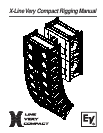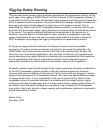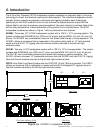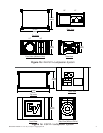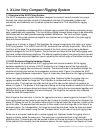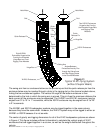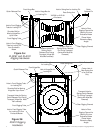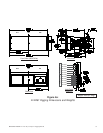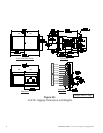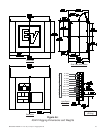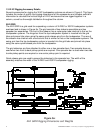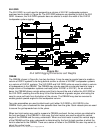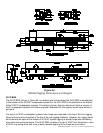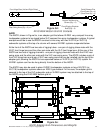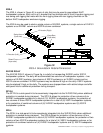
ELECTRO-VOICE
®
X-Line Very Compact
TM
Rigging Manual5
1. X-Line Very Compact Rigging System
1.1 Overview of the XLVC Flying System
The XLVC loudspeaker systems have been designed to construct correct acoustic line arrays.
Acoustic line arrays typically consist of independent columns of loudspeaker systems that
acoustically and coherently sum to radiate cylindrical wavefronts. This simplifies the rigging
system.
The XLVC loudspeaker enclosures utilize a hinged rigging system that makes constructing arrays
easy, predictable and repeatable. This front-hinging rigging concept allows arrays to be accurately
constructed with the least possible spacing between enclosures. The front and back rigging
hardware for linking two enclosures together are captured as an integral part of the side rigging
tube and channel modules.
A basic array is shown in Figure 2 that illustrates the integral components that make up a typical
XLVC flying system. The XLD281 and XLE181 enclosures are vertically trapezoidal - taller at the
front than at the back. The enclosures are hinged at the front corners using rigging hardware
specially designed for the XLVC system. The enclosures are linked at the rear using rigging arms
that have multiple attachment positions. The different positions adjust how close the back corners
of the enclosures are pulled together; hence, adjusting the vertical angle of the bottom enclosure.
1.2 XLVC Enclosure Rigging Hardware Details
On each side of the enclosure are XLVC rigging tube and channel modules. All the rigging
hardware needed to fly a column of XLVC enclosures is an integral part of the high-strength
aluminum-alloy rigging tube and channel modules. The structural load is transmitted through the
modules minimizing the load on the loudspeaker enclosure shell. Figure 3 illustrates the XLVC
enclosure rigging hardware components. Figure 4 shows key dimensions for the rigging hardware.
At the front rigging module is a rectangular rigging tube. Captured inside the rigging tube is a
rigging connector called the hinge bar. The hinge bar is constructed from a high-strength
aluminum alloy. The hinge bar can slide out the top of the tube and be locked into position as
shown in Figure 2. The portion of the hinge bar sticking out the top would be inserted into the front
rigging tube of an enclosure above and pinned into place, linking the two enclosures together and
forming a hinging point between the two enclosures. The hinge bar can also be fully retracted
inside the tube for transportation.
Each hinge bar has two holes in the bar for rigging box-to-box or securing pins for transport. The
front rigging tube has two holes for pinning the bar in place to construct arrays or for transport. As
shown in Figures 3a and 3b, the bottom hole and pin on the bar locks the hinge bar in place at the
top of the tube. The exposed top hole and pin is then used to lock the hinge bar in the tube of an
enclosure above. For transportation, the hinge bar would be slid down inside the tube and would
be locked in the tube module using the two “transport holes” on the rear of the front rigging tube.
At the rear is a channel module with a vertical rigging slot. Captured inside the rigging slot is a
rigging connector called the swing arm. The swing arm is constructed from a high-strength
aluminum alloy. The swing arm can be pivoted to stick out the top as shown in Figures 3a and 3b.
At the bottom of the channel from the enclosure above, the rear rigging slot has a series of holes.



